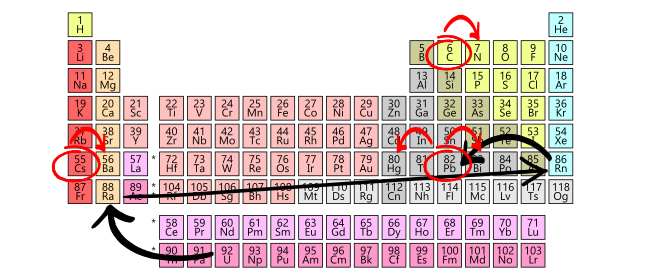“Time flies over us, but leaves its shadow behind” – Nathaniel Hawthorne
In the third episode of the Core Ideas podcast, Adam and Josh examine their dating struggles… with sediment cores! Specifically, the techniques used in paleolimnology to determine sediment age-depth relationships.
Paleolimnological studies rely on the indirect archives preserved in lake sediments, and an accurate chronology or dating record is essential to accurately interpret these archives. Sediment depth alone (i.e. how long the sediment core is) does not provide information on how old the sediments are, as sedimentation rates can vary massively between lakes and even among different locations within a single lake.
So how then is the age of a particular sediment interval determined? Some markers such as varves, an Ambrosia peak, or tephra (ash) layers are associated with specific events and provide a rough guide of the age-depth relationship. However, these relative markers are highly localized, and more general approaches to determine how long ago a particular sediment layer was deposited typically rely on radioisotopes.
Radioisotopic dating relies on known rates of radioactive decay to determine how long ago a biological remain (or the sediment itself) was isolated from the source of that radioisotope. As half-lives differ among radioisotopes, the period of interest in a given study will determine the appropriate radioisotope for the record. Radiocarbon or carbon-14 is famous due to its uses in archaeology and is commonly referenced in books and movies. Carbon-14 has a ~5700 year half-life and is useful for dating samples less than ~50,000 years old, but is not a precise tool for providing dates over the past few centuries. For changes since general industrialization (i.e post-1850), lead-210 (half-life of ~22 years) and cesium-137 (half-life of ~30 years) are typically used. Lead-210 occurs naturally as part of the uranium-238 decay series, whereas cesium-137 is primarily associated with the fallout of nuclear weapon testing and accidents (e.g. Chernobyl).
The show ends with a general discussion of dating topics including, error in age estimates, how lead-210 now rarely provides a basal date earlier than ~1900, alpha vs. gamma dating, and some more exotic dating approaches.

